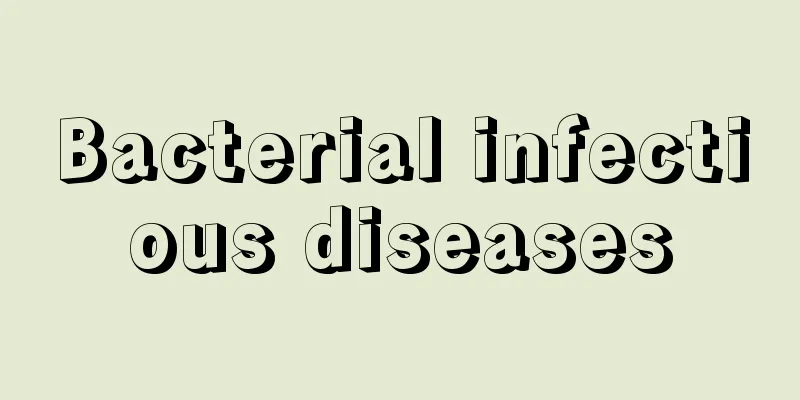Bacterial infectious diseases

|
Bacterial infectious diseases, as the name suggests, are diseases caused by bacterial infection. Different bacterial infections have different symptoms. For example, Staphylococcus aureus can cause skin diseases, and in severe cases it may also cause pneumonia, meningitis, etc. There are also some bacteria that can cause meningitis, pneumonia, etc., such as Escherichia coli, Klebsiella pneumoniae, H. influenzae, etc. If a bacterial infection occurs, you must go to the hospital for medical treatment immediately. On the surface of a normal person's body and in the cavities that communicate with the outside world. For example, there are various microorganisms in the oral cavity, nasopharynx, intestines, and reproductive tract. Under normal conditions of human immune function, they are beneficial and harmless to the human body and are called normal flora. Among them, those that live on the human body surface include: Staphylococcus aureus, Staphylococcus epidermidis, Corynebacterium JK, Propionibacterium acnes, etc. The following are some of the species that reside in the oropharynx. Staphylococci, α- and β-hemolytic streptococci, non-hemolytic streptococci, pneumococci, Neisseria, Moracata, Haemophilus, anaerobic cocci, lactobacilli, diphtheroids, eubacteria, fusobacteria, bacteroides, Candida albicans, etc. Those residing in the intestines (from the end of the jejunum to the colon) include Escherichia coli, Enterobacter aerogenes, Proteus, Pseudomonas aeruginosa, Staphylococcus, Enterococcus, Clostridium perfringens, Peptococcus, Streptococcus, Bacteroides (mainly Bacteroides fragilis), Bifidobacterium, Eubacterium, Fusobacterium, and Candida albicans. The bacteria that live in the vagina include: Lactobacillus, diphtheroids, Bacteroides, Enterococcus, Escherichia coli, Neisseria, anaerobic cocci, etc. Clinically, one bacterium can infect different parts of the body and cause different diseases. For example, Staphylococcus aureus can cause skin and soft tissue infections, as well as pneumonia, osteomyelitis, meningitis, sepsis or endocarditis; enterotoxigenic Staphylococcus aureus can cause food poisoning; a Staphylococcus aureus that produces a specific exotoxin (TSST-1) can cause toxic shock syndrome. In addition, different bacteria can cause similar clinical manifestations. For example, Escherichia coli, Klebsiella pneumoniae, and Haemophilus influenzae can cause pneumonia, meningitis, sepsis, etc.; Staphylococcus aureus, α-hemolytic and non-hemolytic streptococci, enterococci, alkaline bacteria, and Pseudomonas aeruginosa can cause infective endocarditis. |
<<: Foodborne illnesses include
>>: How to remove fat particles on cheeks
Recommend
How to make your hair flip
Hair is related to a person's appearance, esp...
What are the symptoms of advanced liver cancer? Pay attention to these 4 symptoms of advanced liver cancer
Liver cancer is one of the serious malignant tumo...
What should I do if my hands, feet and armpits sweat a lot?
For the phenomenon of excessive sweating in the h...
Is nasopharyngeal cancer hereditary?
Is nasopharyngeal cancer hereditary? This is the ...
Methods for detoxification and clearing stool
Everyone has different living habits. Some people...
How to relieve the feeling of vomiting
Vomiting is a symptom that many people experience...
What is the reason for children's chicken swelling
Children don't care about anything when playi...
What are bones made of
The basis of human movement is the skeleton. The ...
How much does it cost to treat melanoma
How much does it cost to treat melanoma? This is ...
What are the ways to unclog blood vessels?
The living standards of modern people have greatl...
What drops should I use to treat nasal congestion in nasopharyngeal carcinoma
What drops should be used for nasopharyngeal canc...
What are the symptoms of stillbirth during pregnancy
Many pregnant women will experience many uncomfor...
The correct way to shave
Shaving is related to a man's face and is a s...
I kept farting after eating barley and red bean soup
Barley and red bean soup is a cold ingredient and...
Do you need to remove the shell of monk fruit when soaking it in water? Why?
Many friends remove the shell of monk fruit when ...









